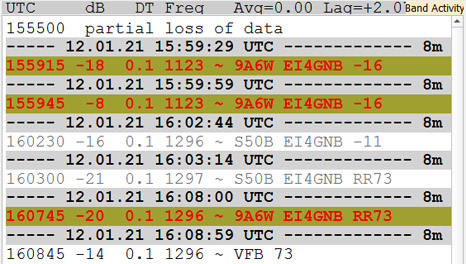DRM (Digital Radio Mondiale) has long been touted as a possible replacement for the analogue AM and FM modes on the radio broadcast bands. The transition to digital has proved problematic as broadcasters and listeners are happy to continue with the status quo, especially on the 88-108 MHz FM band.
While many countries have opted for DAB and DAB+ transmissions on the VHF Band 3 (175-225 MHz), some countries are looking at the option of using DRM transmissions in the spaces between the FM signals on the 88 to 108 MHz band.
From June to December 2019, a sixth month trial DRM transmission was carried out in the Russian city of St.Petersburg. The 800-watt DRM transmitter was on 95.7 MHz between the FM radio stations Studio 21 at 95.5 MHz and Comedy Radio at 95.9 MHz.
The main audio source for the trial was the Comedy Radio, which was broadcasted simultaneously as an analogue FM service (3KW) and a DRM service (0.8KW). This allowed a direct comparison to be made between the analogue FM and DRM coverage.
The results of the trial were publish in December 2020 in a paper titled..."RESULTS OF THE DRM SIMULCAST FIELD TRIAL IN FM BAND IN THE RUSSIAN FEDERATION... June to December 2019"
Some of the main conclusions were as follows...
The trial has shown that for DRM Simulcast with frequency offset of 150 kHz, DRM digital signal does not interfere with the analog FM signal at a power difference up to -10 dB.
For a frequency offset of 200 kHz, the digital DRM signal does not interfere with the analog FM signal at any power values that the transmitter could provide.
Because DRM Simulcast allows to keep FM broadcasting and launch terrestrial digital radio broadcasting in the same frequency range. DRM multiplexes can be launched between existing FM radio stations without interfering with them. To do this, it can use one transmitter and existing combiner and antenna system.
20:1 Digital Power Advantage... In
separate tests done in Indonesia, it was claimed that six test points covered by the 1 kW transmitter (FM) could be served with only 50 watts of DRM power.
“In testing a simulcast broadcast using 1 kW and 800 Watt with spacing distance 150 kHz between the middle frequency FM and DRM, the measurement showed no interference between FM and DRM. The DRM quality was at least equally good to FM, but the sound quality of DRM was even better than FM.” In an article titled "
Use DRM on India’s FM Band", the chair of the of the India chapter of the DRM Consortium Yogendra Pal stated..."
Using DRM, in the allocated 200 kHz bandwidth, a broadcaster can transmit up to six high-quality audio services along with a host of value-added services and Emergency Warning Functionality (EWF). All digital services work without disturbing the existing analog FM services."
He also claimed that mobile phones that used for listening to analogue FM transmissions can also be used for listening to DRM transmissions as long as manufacturers allow the DRM app to access the baseband digital output.
"DRM standard can be supported natively on all mobile phones based on the already available tuners for analog FM reception. No additional hardware and, therefore, no additional design or component cost is required to enable DRM digital FM support on these phones.
The DRM App for mobile phones has already been developed and demonstrated by a number of organizations. Only the mobile phone manufacturers need to provide access of the baseband digital output. "

In summary... A lot of the information shown above is from the DRM industry who obviously want to push the new digital standard. However, the tests of using DRM on Band 2 (88-108 MHz) do suggest that there are more options than just setting up a new digital broadcast band elsewhere on the VHF spectrum. There are spaces in the FM band (88-108) and DRM can utilise those gaps.
Band 2 also tends to have mush better mobile coverage than the higher VHF bands around 200 MHz which are used for DAB transmissions and many listeners already have dedicated aerials for the 88-108 MHz band.
Transmitting DRM on Band 2 is also an attractive option for broadcasters in that they can use the same antennas and infrastructure. It provides them with an obvious path to gradually migrate to digital only services in the future.



































